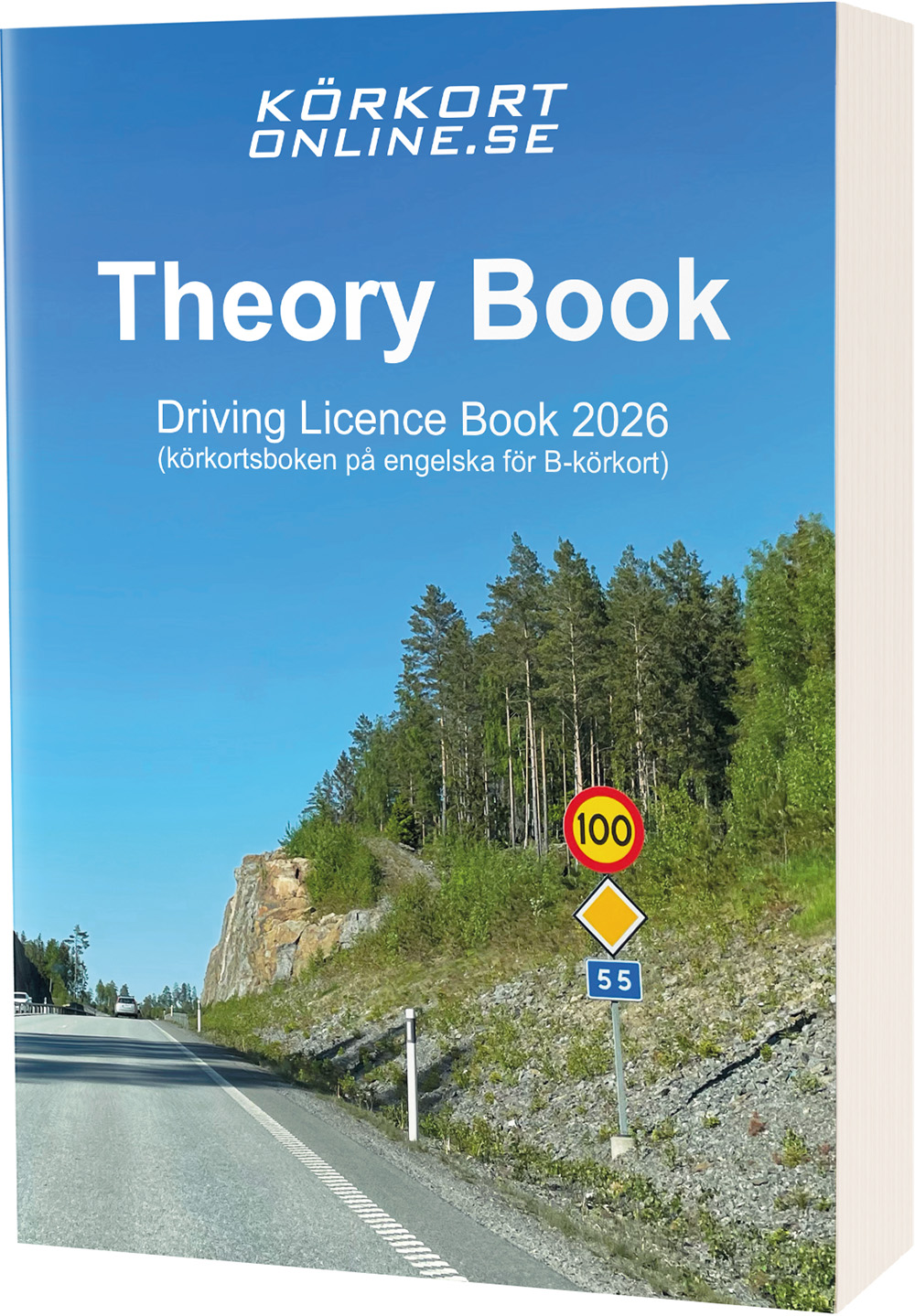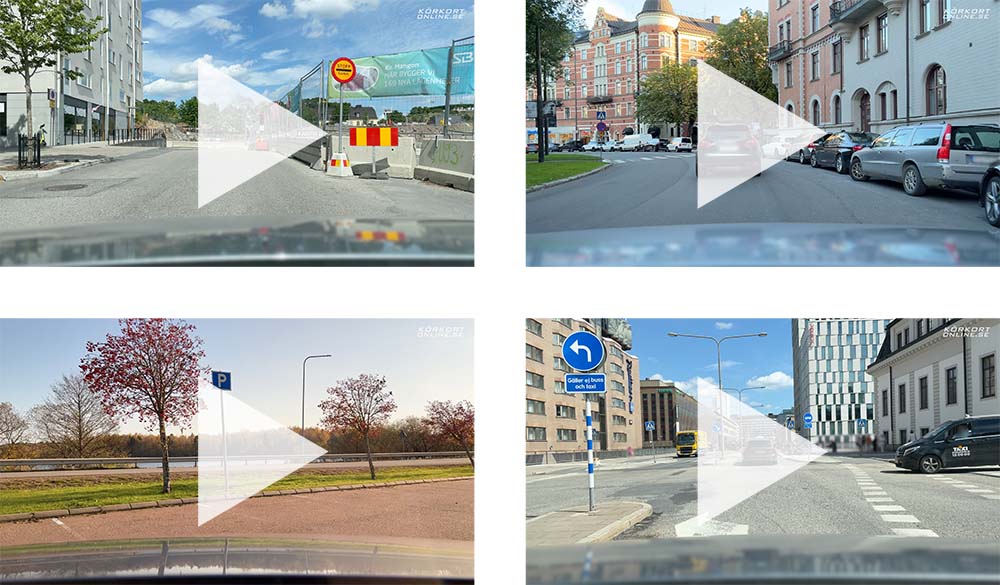The impact of cars on environment and climate
The whole world is trying to reduce its carbon dioxide emissions. A significant part of those emissions is caused by vehicle traffic. The Swedish Parliament, government and public agencies therefore have an interest in ensuring that people are as environmentally friendly as possible.
Greenhouse effect
The greenhouse effect is named after the function of a greenhouse. The rays of the sun come in through the glass roof of the greenhouse, providing heat. Most of that heat then remains in the greenhouse, creating a suitable environment for the plants. The same process also occurs naturally on a larger scale, whereby the Earth represents the plants and the Earth’s atmosphere represents the glass roof.
The problem arises when the greenhouse effect is unnaturally enhanced. This is what happens when we extract fossil fuels and burn them.
| Normal greenhouse effect |
 The rays of the sun (yellow arrows) pass through the atmosphere (grey line) and reach the Earth. Much of the heat is absorbed (red dots) and the excess bounces off the Earth’s surface and is reflected back out into space (red arrows). |
| Enhanced greenhouse effect |
 The car releases carbon dioxide into the atmosphere, which makes it thicker. When the atmosphere gets thicker, some of the heat rays reflected back from the surface cannot get through. These rays instead bounce back towards the Earth while emitting more heat. In other words, the Earth is getting warmer than it otherwise would. |
Consequences
There are many potential consequences of a warmer climate. Examples:
- Natural disasters – meltwater from giant glaciers can cause major flooding.
- Agricultural disturbances – certain food crops are highly sensitive to changes in temperature, and very small changes can make their cultivation impossible.
- Diseases – viruses and bacteria that cannot withstand our currently cold climate may spread to Sweden.
- Water shortage – a large part of the Earth’s population uses glacier meltwater as drinking water. If the glaciers melt, these people will have no water to drink.
Equipment and technology
Catalytic converters
- Catalytic converters transform the harmful substances in exhaust fumes into carbon dioxide and water.
- 80–95% of the harmful substances are eliminated.
- Catalytic converters have an operating temperature of 400–600°C, which means that it takes a while for them to function properly.
Engine heaters
The engine heater is located underneath the bonnet and is used to warm up the engine. There are many benefits to an engine heater:
- The catalytic converter starts working sooner.
- Lower fuel consumption.
- Less wear on the engine.
How long the engine heater should be turned on:
- +10°C: 30 minutes before leaving.
- 0°C: 60 minutes (1 hour) before leaving.
- -20°C: 90 minutes (1.5 hours) before leaving.
Keeping the engine heater on for too long is both unnecessary and wasteful (as it consumes electricity without adding any benefit).
Reducing air resistance

It is not only the weight of the caravan that increases fuel consumption – the increased air resistance also makes a difference.
The fewer wind-catching areas there are, the less fuel is needed to propel the car. Things to consider when it comes to air resistance:
- Remove rails and roof boxes when not in use.
- Drive with the windows shut. An open side window or sunroof disrupts the airflow around the car, which leads to greater air resistance.
- Avoid tyres that are too wide.
Correct tyre pressure
Tyres with high air pressure will roll more easily than tyres with less air in them. The more easily the car rolls, the less fuel it takes to propel it. It also reduces the wear on the tyres. See the car’s user manual and information from the tyre manufacturer.
Use the air conditioning sparingly
Air conditioning (AC) systems use a lot of energy. If you turn off the AC, you can save 5–10% in fuel consumption.
Washing the car correctly
You should wash your car in a location intended for that purpose, such as a car wash at a petrol station. These places have special floor drains that collect any harmful residues from the water.
Waxing your car not only makes it look good – the wax also forms a protective film which means that less dirt sticks to the car. This in turn means fewer washes are necessary, which is good for the environment.
Chemical emissions
Carbon dioxide (CO2)
- The greenhouse gas that contributes the most to the greenhouse effect and climate change.
- The combustion of fossil fuels, such as petrol and diesel, is a major cause of carbon dioxide emissions.
Carbon monoxide (CO)
- Impairs the oxygen uptake in the blood.
- Leads to tiredness, and can be life-threatening in large amounts.
- Catalytic converters reduce carbon monoxide emissions.
Hydrocarbons (HC)
- Cause cancer.
- May impact on genetic material.
- Contribute to the formation of tropospheric ozone.
Nitric oxide (NOx)
- Contributes to the acidification of soil and eutrophication of lakes.
- Impacts on human genetic material and airways.
- Contributes to the formation of tropospheric ozone.
Tropospheric ozone
- Ozone that forms too close to the ground is harmful to plants and animals.
Soot and harmful particles
- Common problem in cities with many cars.
- Affect the airways and can cause cancer.
Noise
- Disturbing car noise is a common occurrence in cities.
- Reduced speed and noise protection reduces the problems.
Here, the speed has been reduced so that residents in the vicinity experience less noise from the traffic. (“Sänkt hastighet av bullerskäl” = “Reduced speed due to noise”)



